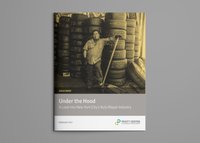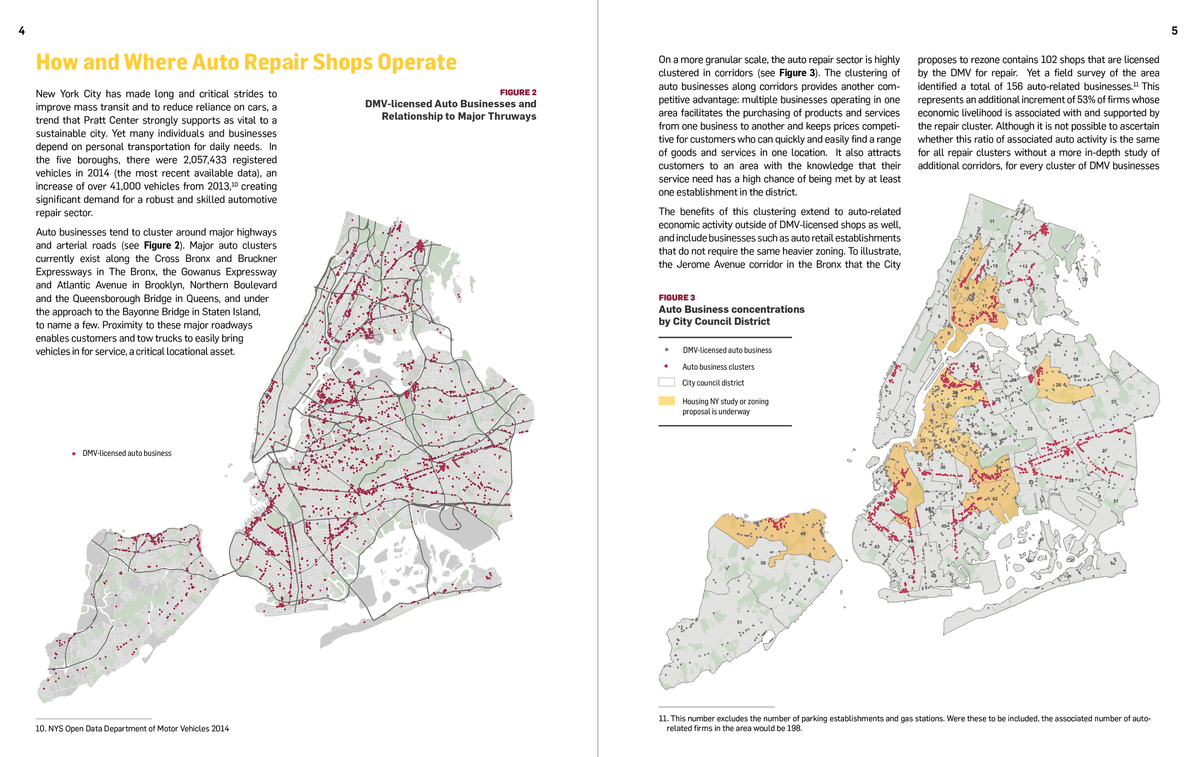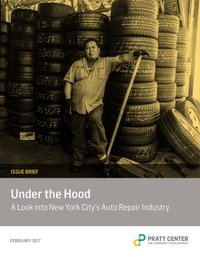
“Under the Hood: A Look into New York City’s Auto Repair Industry” is an in-depth look at the often-ignored auto repair sector and provides critical statistics about its most vital asset: its workforce. Our report reveals that the industry is a source of well-paying jobs, particularly for individuals who typically face high barriers to employment, including people of color, immigrants and those with a limited educational attainment.
Despite the valuable employment opportunities generated by the sector, there has been no formal planning to ensure the sector’s continued sustainability. This is particularly problematic in light of the numerous proposed zoning changes and real estate pressures impacting the city’s main auto repair corridors. When auto businesses are displaced and jobs are lost, alternative employment opportunities are not often of the same quality.

Findings
The report maps the locations of auto repair shops and describes the unique historical and economic reasons why they are not evenly distributed throughout the city. Auto repair shops are highly clustered for collective economic benefit, and are both dense and long, with shop corridors along major arterial roadways. As a result, auto repair businesses face:
Competition from higher paying land uses allowed in C8 and M zones, such as restaurants and self-storage facilities, exacerbated by changes in nearby uses
Direct competition from residential uses in rezoned areas, which can generate substantially higher revenues for land owners and which prohibit new auto uses.
Disruption of a cluster, which can cause a “domino effect” undermining the surrounding businesses
Few options for relocation, and even fewer that can accommodate a relocation of a group of businesses. In addition, landlords who do not possess the proper Certificate of Occupancy put the auto shop at risk for fines from multiple agencies.
Recommendations
These characteristics suggest that planning for the future of the sector is both essential and will require a citywide lens. No formal economic planning for the sector has been undertaken. As “Housing New York,” the De Blasio administration’s ambitious housing plan, is poised to impact 40% of the fifteen Council Districts with the largest concentration of auto shops, it is essential that a comprehensive study be conducted to examine the sector’s needs and identify resources to ensure that quality jobs are not lost and that the city has enough auto repair capacity to meet its need.
